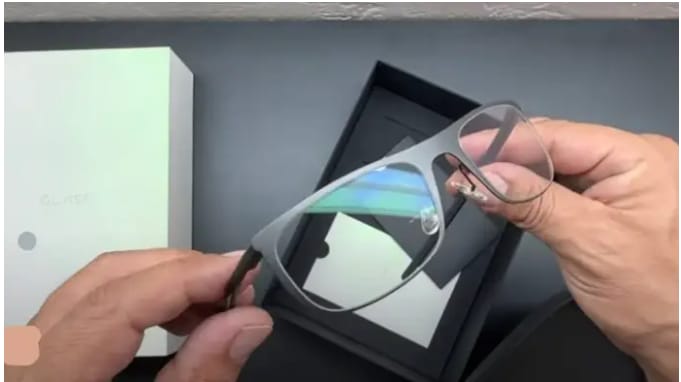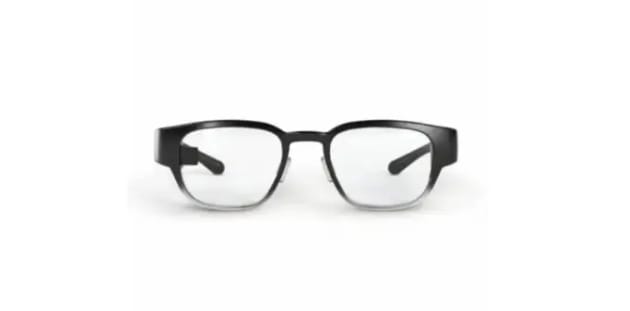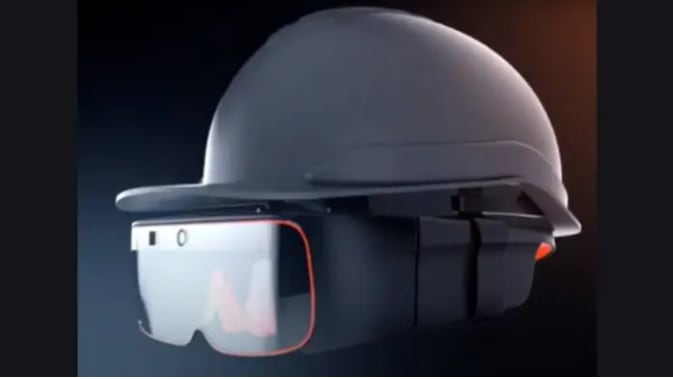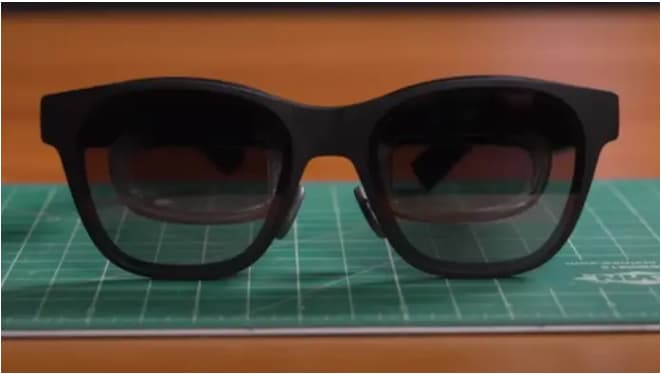An Interest In:
Web News this Week
- April 15, 2024
- April 14, 2024
- April 13, 2024
- April 12, 2024
- April 11, 2024
- April 10, 2024
- April 9, 2024
Smart Glasses: The Next Big Thing in Wearable Technology
Smart glasses are wearable devices that allow users to view digital content or interact with technology hands-free while still being able to see the physical world around them.
These glasses often include a small display, a camera, and other sensors that allow for augmented reality (AR) and other advanced functionality.
Smart glasses have a range of potential applications, including in the fields of healthcare, manufacturing, and education.
In healthcare, for instance, doctors could use the glasses to access patient data during procedures, while in manufacturing, workers could use them to access technical manuals or instructions while working on machinery.
In education, they could be used to create interactive and engaging learning experiences for students.
Concept
One of the most well-known examples of smart glasses is Google Glass, which was released in 2013. While it garnered significant media attention, it ultimately failed to gain mainstream adoption due to concerns over privacy and social acceptability.
The general concept is to provide users with a hands-free way to access information, perform tasks, and interact with their environment.
The history can be traced back to the early 2000s when various companies began developing prototypes of wearable computers like Bluetooth speakers, receivers, and wireless transmitting devices.
However, it wasnt until Google released its Google Glass in 2013 that the concept gained mainstream attention.
Google Glass
Googles smart glasses, also known as Google Glass, were a wearable computer device designed to look like a regular pair of glasses.
The glasses featured a small screen integrated into the right-hand side of the frame, which enabled users to access information, take photos, record video, and perform other tasks through voice commands or touch controls.
The idea behind it was to create a device that could provide a hands-free experience, allowing users to access information and interact with their surroundings without having to constantly look down at a phone or computer screen.
It also featured a range of sensors, including an accelerometer, gyroscope, and compass, which enabled it to detect the users movements and location.
This allowed the device to provide contextual information based on the users surroundings, such as directions, local weather updates, and nearby points of interest.
While Google Glass was initially targeted at consumers, its potential applications in industries such as healthcare, manufacturing, and logistics quickly became apparent.
Despite its potential, it ultimately failed to gain widespread adoption among consumers, due in part to privacy concerns and an unpolished user experience.
However, the concept of smart glasses continues to evolve, with companies such as Microsoft and Vuzix developing new devices aimed at enterprise customers.
Privacy Concerns
Obviously, there were going to be some concerns about smart glasses centered mainly around privacy issues.
Since its inception, there have been concerns that smart glasses could be used to secretly record conversations and capture sensitive information without consent.
As a result, some governments have introduced laws to regulate the use of smart glasses in public spaces.
For example, when Italys data protection authority asked Facebook (now Meta) to clarify if its AR glasses were compliant with Italys privacy laws, especially with minors.
The report also said that the data protection authority wanted to make sure that Facebook has put in place a law to make sure that its citizens privacy is respected and protected.
Users concerns about these glasses vary, but most center around privacy, security, and the potential for distraction.
There were concerns that Facebooks AR glasses could be used to spy on people or be hacked to access sensitive information.
Also, there are concerns that wearing smart glasses could distract users from their surroundings or lead to an increase in accidents.
Market Awareness
Smart glasses are a type of wearable technology that has been gaining popularity in recent years.
The global smart glasses market size was valued at USD 3.6 billion in 2020 and is expected to grow at a compound annual growth rate (CAGR) of 10.1% from 2021 to 2028 according to Global Market Insights.
The market for smart glasses is being driven by the growing demand for hands-free communication devices, as well as the increasing adoption of augmented reality technology.
The healthcare industry is one of the major end-users, with applications ranging from telemedicine and remote patient monitoring to surgical training and rehabilitation.
The retail and e-commerce industries are also adopting these glasses to improve the customer experience through augmented reality displays that allow customers to see how products look on them or in their homes before making a purchase.
Other industries that are expected to drive growth in the smart glasses market include manufacturing, logistics, and field services, where workers can benefit from hands-free access to information and increased productivity.
Smart glasses by consumers in the household market are still relatively low.
This is mainly due to several factors, such as high prices, limited applications, social acceptance, and privacy concerns.
The majority of consumers perceive smart glasses as a novelty gadgets and not a necessity, which limits their willingness to invest in these products.
Benefits of Smart Glasses
Smart glasses can now do so much more. Its like pushing your smartphone from the tips of your fingers to the front of your face.
What are the reasons companies like Google, Apple, Microsoft, Amazon, and Intel are jumping on the bandwagon of smart glasses?
The thought of making these glasses act like the screen of your phone where you can access everything from making calls, sending messages, and emails, watching movies, and even playing games is enough to make every tech brand rush the trend like ants on sugar.
By now I am sure you are starting to realize something amazing. Here are some practical applications of smart glasses in everyday life:
- Hands-free calling and messaging
- GPS navigation and directions
- Taking photos and videos without holding a camera
- Virtual meetings and video conferencing
- Language translation in real-time
- Augmented reality gaming and entertainment
- Shopping and product reviews while trying on clothes
- Accessing medical records and vital signs during procedures
- Providing on-the-job training and instructions for workers
- Health and fitness tracking during workouts or daily activities
Features
Smart glasses are wearable devices that have the capability to display information to the wearer while still allowing them to see the environment around them. Some of the features include:
Camera: Smart glasses often have a camera that can capture photos or videos. The camera can be used for various purposes, such as recording events or taking pictures of documents.
Audio: They may have built-in speakers or headphones that allow the wearer to listen to music or receive audio notifications. The speakers are mostly located on the side of the glassses.
Connectivity: These glasses can connect to other devices, such as smartphones or computers, using wireless technologies such as Bluetooth or Wi-Fi. This feature is mostly used while trying to gain connection to a playback from a media device.
Voice control: Many smart AR glasses come equipped with voice control capabilities, which allow the user to interact with the device using voice commands. It is similar to the Google Assistant, Siri or Alexa.
Augmented reality: Some smart AR glasses can overlay digital information onto the real world, creating an augmented reality experience.
Fitness tracking: Some have fitness tracking features, such as pedometers or heart rate monitors.
Battery life: Battery life is an important feature as users may need to wear them for extended periods of time.
Design: Smart glasses come in a variety of designs, from sporty to more fashion-forward styles, allowing the wearer to choose a style that fits their preferences.
Overall, the features of smart glasses make them a versatile device for a range of applications, from entertainment to work and productivity.
Pricing
Depending on the brand, features, and build quality of the product, the cost of smart glasses varies a lot
They can range in price from around $100 for some versions to several thousand dollars for more expensive variants.
The pricing of smart glasses varies widely depending on the brand, features, and functionality. Some of the most popular smart glasses and their prices include:
Google Glass discontinued, originally priced at $1,500
Vuzix Blade Smart Glasses starting at $799
North Focals starting at $599
ThirdEye X2 MR Glasses starting at $1,950
Recon Jet Smart Glasses starting at $1,199
Nreal Light starting at $499
**- Bose Frames starting at $199
- Epson Moverio BT-300 starting at $699
- Pivothead Kudu starting at $299**
Tech Companies Involved in Smart Glasses Production
There are several companies involved in the production and development of some smart AR shades, and some of the most popular variants that they have produced are:
Google Glass: Developed by Googles X Lab and launched in 2013, it offers a heads-up display, voice-activated controls, and a camera.
Microsoft HoloLens: Developed by Microsoft, it is an augmented reality headset that offers a holographic experience and gesture controls.
Vuzix Blade: Developed by Vuzix, the Blade is one of a kind that offers a heads-up display, virtual assistant, and an 8-megapixel camera.
North Focals: Developed by North, the Focals are prescription glasses that offer a heads-up display, voice-activated controls, and notifications.
Epson Moverio: Developed by Epson, the Moverio is an augmented reality headset that offers a first-person point of view and a heads-up display.
ODG R-9: Developed by Osterhout Design Group, the R-9 is a smart glass that offers a heads-up display, voice-activated controls, and an 8-megapixel camera.
Snap Spectacles: Developed by Snap Inc., the Spectacles are glasses that allow users to capture and share moments with a built-in camera.
Bose Frames: Developed by Bose, the Frames are audio-enabled and offer a personalized audio experience and voice-activated controls.
Nreal Light: Developed by Nreal, the Light is an augmented reality headset that offers a high-resolution display and a lightweight design.
Everysight Raptor: Developed by Everysight, the Raptor is a smart glass that offers a heads-up display, voice-activated controls, and an 8-megapixel camera.
Technology is fast evolving and with it comes lots of opportunities, staying informed is very important as it helps us sense those opportunities and utilize them properly.
Original Link: https://dev.to/cryptoneroo/smart-glasses-the-next-big-thing-in-wearable-technology-2mfc
Dev To
 An online community for sharing and discovering great ideas, having debates, and making friends
An online community for sharing and discovering great ideas, having debates, and making friendsMore About this Source Visit Dev To







